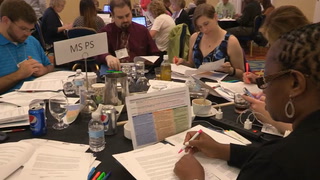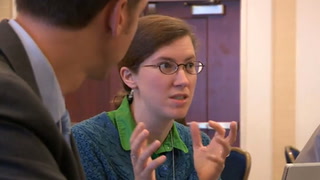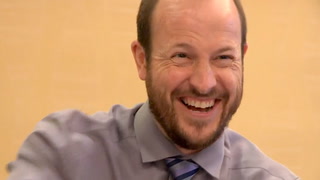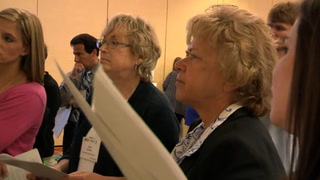NGSS EQuIP Rubric: Overview Transcript
Speaker 1: A couple things to note about the rubric before we jump into using it. It's designed to evaluate lessons and units.
Anthony: I'm Anthony Kwan. I'm a STEM consultant, Science, Technology, Engineering, Mathematics for LA county. I'm here today to really figure out what good, quality lessons should look like under the lens of NGSS.
Speaker 1: Today I want us to get into the meat of using the rubric.
What I'd like for you to do is to think about the shifts of the NGSS.
Students learn better when they learn in the way scientists and engineers learn and they're truly engaged in the process and are making meaning of things as opposed to be passive consumers of information. The rubric is really a tool that helps examine lessons and units for quality and alignment to the NGSS. It is a set of criteria that's organized into three categories: The first being alignment to the NGSS, the second being instructional support and the third, monitoring student progress. It's really a tool to use when examining lessons and units, either individually or ideally in a group. We hope that the rubric will be used like we're going to use it today and tomorrow in groups and as part of a discussion and it really becomes the structure for the discussion more than a tool in and of itself.
Anthony: The hard part here is getting everybody understanding just what Next Generation Science Standards is all about. What the equipped rubric has actually brought for me is getting people to understand what actual three dimensional teaching and learning would look like through a lesson.
Speaker 3: You can look at this kind of like an evaluation and you're creating a checklist of what's there, what you've done well, what you've done partially well and where it's not addressed at all.
Anthony: I'm trying to figure out what's the end product of all this? Is it about the process and about curriculum design, like by doing this we get a sense of how to better do this ourselves or is it more about just okaying a science unit for somebody to go ahead and use in their classroom?
Speaker 3: The end product is multi-steps. How can we use what we've done in the past to now transition to teaching of science in the future? What do we have to do differently in order to make that transition and how do we continue to learn the process?
Speaker 4: I think this rubric is really exciting. It's non-trivial to learn and I think it takes practice, I'm going to get better at it the more I do. I can see the tool as being a useful way to help people learn about NGSS while also learning about what a good lesson in NGSS land looks like.
Speaker 1: One of the things we focused on was the idea of feedback and evidence and how critical evidence is to use in this process.
Speaker 5: The first two steps, evidence and reasoning come directly from the unit or the lessons that you are looking at.
You literally take that unit and that lesson and you mark it up and you go through and when you feel like you can see, touch, you know that that's evidence of a practice or a cross-cutting or disciplinary core idea, but you identify that on the actual lesson or unit itself.
Reasoning is when you take the evidence and you explain how it connects to those criteria of the rubric and then you provide feedback about what evidence is or is not explicit in the unit.
Speaker 4: As we take our own lessons and try to make them more aligned with NGSS, whether it's using that rubric as a first step or making revisions and then using the rubric, it is an iterative process.
Speaker 6: As people use the rubric and use the criteria to inform their thinking and their transitioning of lessons and units, we find lessons becoming more three dimensional, more engaging for students, better supporting all students and their learning process and better supporting the teacher being able to monitor their learning over time.












3 Comments
George Shenouda Jul 15, 2017 12:22pm
Patrcia Mesch Jun 12, 2016 5:41pm
Surinder Kaur Feb 22, 2016 12:11pm